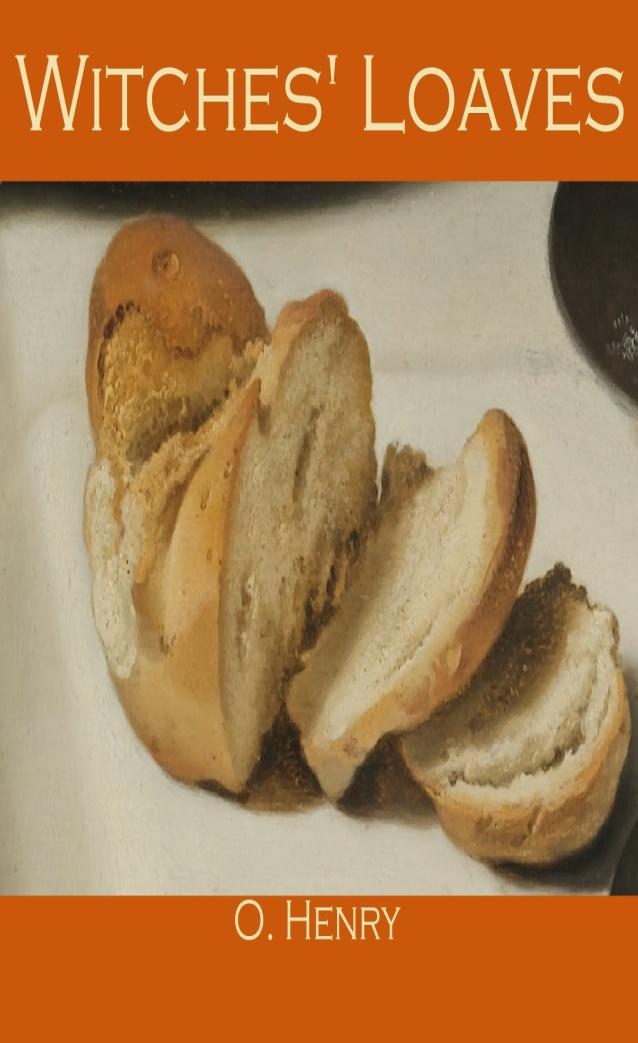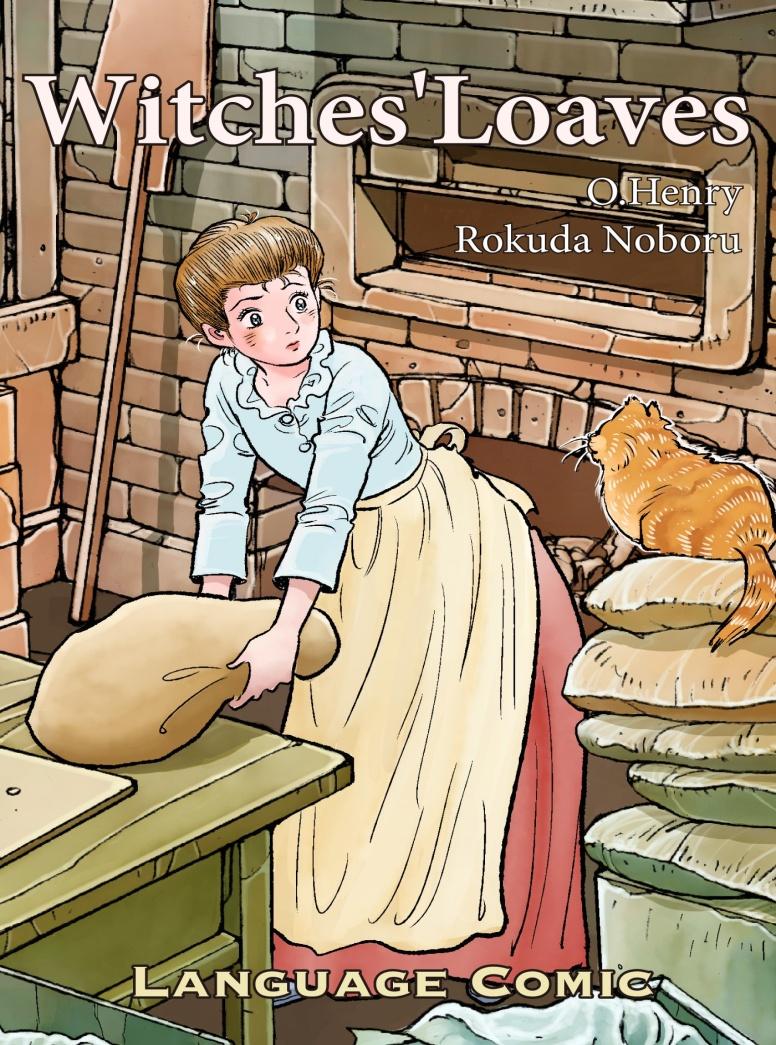Обучение работе с текстом «Заколдованные хлебцы»
9 класс
Задачи
Обучение: активизировать в речи новую лексику, учить смысловому чтению с извлечением значимой информации, развивать навыки обсуждения проблем, поставленных на уроке.
Развитие: развивать коммуникативные действия, умения аудирования, говорения.
Воспитание: воспитывать эстетическое сознание через освоение художественного наследия страны изучаемого языка, способствовать формированию нравственных чувств и поступков.
Планируемые предметные результаты, которые отрабатываются на уроке
понимание прочитанного, анализ ситуации, оценка информации,
установление причинно-следственной взаимосвязи фактов и событий, изложенных в тексте.
Witches’ loaves
Miss Martha Meacham had a small bakery. She was neither very rich nor very poor. She had two thousand dollars in the bank.
Miss Martha was forty years old. She had a kind heart, and only two of her teeth were false. Although she was still unmarried she hoped to get married some time2.
Two or three times a week a customer came in to buy some bread. He was a middle-aged man with a beard and he wore glasses.
Soon Miss Martha began to take an interest1 in him. He spoke English with a strong German accent. His clothes were old but clean and he had good manners.
He always bought two loaves of stale bread. Fresh bread was five cents a loaf. Stale bread was two loaves for five cents. The customer never bought fresh bread.
Once Miss Martha saw red and brown stains on his hands. She was sure then that he was an artist and very poor. She was sure he lived in a cold room where he painted his pictures. He ate stale bread and thought of the good things that were sold in Miss Martha’s bakery. When she sat down to dinner or had tea and jam, she used to think of the poor artist with good manners and feel sorry for him. She wanted to share all the good things she had with the well-mannered man. I have told you already that Miss Martha had a kind heart.
One day she brought from her room a picture that she had bought many years before. With its help she hoped to find out whether the man was really an artist.
It was a Venetian scene2. There was a beautiful palace in the picture, gondolas, young ladies, the moon and the stars. She hung the picture on the wall of her bakery so that the artist could notice it.
Two days passed. The customer came in for bread.
“Two loaves of stale bread, blease3!”
“You have here a fine picture, madam,” he said taking the bread from her.
Miss Martha was very happy to hear these words. “Do you think it is a good picture?” she said. “Well...” he said, “the palace is not so good. The perspective is not true. Good morning1, madam.” He took his bread and left.
Yes, he must be an artist! Miss Martha was sure of it now. She took the picture back to her room. How kindly
is eyes shone behind his glasses! How clever he was!
He saw the perspective at once. And he has to eat stale bread only! But artists often have to struggle before they become famous.
How she wanted to be of some help2 to him! She wanted to keep house for him, to share with him all the Kod things she had in her bakery. She was even ready to share her two thousand dollars with him!
Time went on. Sometimes he talked to her for a few minutes. He bought only stale bread as before. He never bought a cake, or a loaf of fresh bread.
She thought he began to look thinner. It was clear to her he did not eat enough, he was starving! How shе wished to add something good to the stale bread he ate. But she knew, poor artists were proud and she was afraid to make him angry3.
Miss Martha began to wear her new dress in the bakery. She also bought some cold cream4 in order to make her face a little more beautiful.
One day the customer came in as usual and asked for stale loaves. While Miss Martha was getting them from the shelf the siren of a fire-engine was heard.
The customer ran to the door to look. Suddenly n bright idea came to Miss Martha. On one of the shelves there was a pound of butter she had bought in the morning. With her bread knife Miss Martha made a deep cut in each of the stale loaves. Then she quickly put a big piece of butter into each cut and pressed the loaves together again.
When the customer turned from the door she was wrapping the loaves in paper.
As usual he said a few pleasant words to her and left.
After he had gone, Miss Martha smiled to herself. But she was not sure... Had she the right to do such a thing?.. Who knows? Artists have their pride. Will he be angry with her? Still, the more she thought of it the more she became sure1that the customer would not be angry2.
For a long time she thought about him: now he comes home and sits down to his dinner of stale bread and water... Now he cuts into a loaf... ah!
Miss Martha blushed. Will he think of the hand that put the butter in the bread? Will he thank her in his heart?..
Suddenly the front door bell rang loudly. Somebody was coming in making a lot of noise3.
Miss Martha hurried to the door. Two men were there. One was a young man smoking a pipe. She had never seen him before. The other was her artist.
His face was very red. His hat was on the back of his head. His eyes looked at her angrily. He raised his fists and shook them in Miss Martha’s face. In Miss Martha's face!
“Dummkopf1!” he shouted very loudly and angrily. Then “Tausendonfer!”2or something like that3in German.
The young man tried to pull him away.
“I will not go,” the artist shouted, “I want to tell her all!”
“You have spoiled everything,” he cried, “I want to tell you. You were a MEDDLESOME OLD CAT4!”
Miss Martha was silent. She could not say a word. She put her hand to her heart.
The young man took the artist by the arm.
“Let’s go,” he said. “You have said too much.” He dragged the angry artist out into the street. Then he came back to the bakery.
“I want to explain everything,” he said. “That man’s name is Blumberger. He is an architectural draftsman. I work in the same office with him.
“It took him three months to draw a plan for a new building. It was for a prize competition5. That’s why he worked so hard at it. He finished inking the lines yesterday. You know a draftsman always makes his drawing in pencil first6. After that he inks the line. When it’s done he rubs out the pencil lines with stale bread. It is better than India-rubber7.
“Blumberger has always bought stale bread here. Today he tried to rub out the pencil lines of his plan with the bread he bought in your bakery... Well, you know that butter is not good for paper... You must understand that his plan can now be used only as paper for sandwiches.” Miss Martha went to her room. She took off her new dress. She put on the old brown one she used to wear. Then she threw the cold cream out of the window.
Задания
1.Предтекстовый этап
Рассмотрите иллюстрации к тексту, предположите, о чем пойдет речь в тексте (прием «Прогнозирование по иллюстрации»)


2.Текстовый
Текстовый этап подразумевает чтение текста и работу над его лексико-грамматическим материалом.
Критерии достижения планируемого результата:
Текст прочитан без ошибок в произношении слов.
Соблюдено правильное ударение в словах и фразах.
Соблюдена интонация, соответствующая коммуникативным типам предложений
Текст прочитан со скоростью, позволяющей осознавать смысл прочитанного.
Упражнения, стимулирующие познавательную деятельность
1.Найдите синонимы следующих фраз из текста
a shop in which bread, cakes, etc, are sold,
a set of artificial teeth ,
a person who buys goods ,
dry,
spots,
a person who draws plans and sketches
2.Какие прилагательные вы бы выбрали для описания Марты Мичем и посетителя булочной
good-tempered, good-natured, bad-tempered, friendly, sensible, attentive,
thoughtful , aggressive, kind-hearted, sympathetic, pleasant, rude.
3.Прореагируйте на следующие реплики. Исправьте утверждения, не соответствующие содержанию текста
Miss Martha owned a large bakery.
She was in good health and was going to get married soon.
One of the customers got interested in Miss Martha.
The customer had good manners and spoke good English.
He always bought a loaf of bread in Miss Martha’s bakery.
One day he brought her a picture of an Italian master.
His manners told her that he was an artist.
Miss Martha made good use of various creams to look younger.
She managed to put butter into his loaves because he was short-sighted.
10.Miss Martha was sure she had done the right thing.
11.The customer brought a young man to encourage him since he was too shy to thank Miss Martha.
12.The customer had hoped to win the prize competition.
13.Miss Martha gave up the idea of getting married.
4.Ответьте на вопросы
How many persons are mentioned in this story?
What were their names and occupation?
What kind of a woman was Miss Martha?
What kind of a man was the customer?
What did the customer always buy?
How much did it cost him?
What did he need it for?
What seemed unusual about him to Miss Martha?
In what way was she sorry for him?
What action did she take?
How did Miss Martha feel about what she had done?
What effect did this have on the customer?
In what way was the customer angry?
Did she escape from his fists?
Who tried to explain the situation?
What is the end of the story?
5.Поставьте следующие предложения в логическом порядке
Miss Martha thought he was a poor artist.
She was ready to share everything she had with him.
She was almost sure that the customer would thank her in his heart.
The young man dragged the angry artist out into the street.
He explained the situation.
Miss Martha realised that she had spoilt everything.
When the moment came Miss Martha put a piece of butter into his loaves.
To make sure of that Miss Martha hung a picture on the wall of the bakery.
She got interested in one of her customers.
Miss Martha had a bakery, two thousand dollars in the bank, and a kind heart.
3.Послетекстовый этап
Обсуждение поведения персонажей текста и их действий
Анализ текста, поведения персонажей
1.О каких человеческих качествах говорится в этом рассказе. Выпишите их , а рядом напишите предложения из рассказа, подтверждающие ваше утверждение
2. Дать развернутую оценку поступкам героев, изложенным в тексте:
Miss Martha;
Mr. Blumberger;
the young man.
3.Инсценируйте рассказ, если он вам понравился.
4.Обменяйтесь репликами в следующих воображаемых ситуациях:
Miss Martha and the customer meet 5 years later.
(Попытаться представить поведение героев в изменившихся обстоятельствах, например, несколько лет спустя или спросить, что бы стало с героями, если бы что-то не произошло)
The customer tells his friends what Miss Martha did.
Miss Martha tells her neighbor what has happened to her.
5.Расскажите о своих впечатлениях о тексте, оцените его. Скажите, что понравилось, что нет и почему
6. Как вы считаете, подтверждает ли текст мысль , не делай добра- не получишь зла?

 Получите свидетельство
Получите свидетельство Вход
Вход












 Этапы работы с текстом на примере рассказа О.Генри "Заколдованные хлебцы" на уроке английского языка (559.72 KB)
Этапы работы с текстом на примере рассказа О.Генри "Заколдованные хлебцы" на уроке английского языка (559.72 KB)
 0
0 778
778 16
16 Нравится
0
Нравится
0


